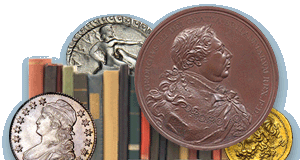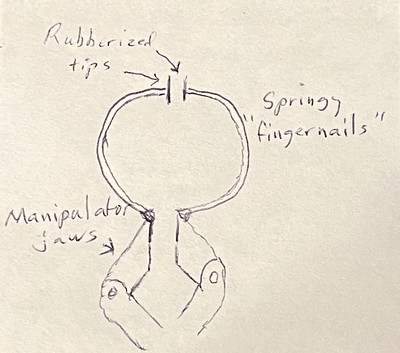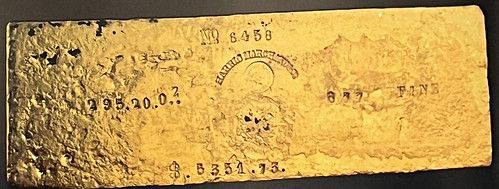
PREV ARTICLE
NEXT ARTICLE
FULL ISSUE
PREV FULL ISSUE
TREASURE TALK WITH BOB EVANS, EPISODE 2.2In January, our good friend Bob Evans began publishing a series of blog articles on the Finest Known website detailing his experience as co-discoverer and curator of the treasures recovered from the wreck of the S.S. Central America. Subject of the book "Ship of Gold", many exhibits, countless interviews and articles, books and auction catalogs feature the legendary haul of gold coins, bars, nuggets, gold dust and more from the 1857 shipwreck. Here's another excerpt - see the complete article online. -Editor
Before that moment standing over the light table in the ship's darkroom, whenever I thought about the SSCA treasure, I imagined a big pile of coins, perhaps piles of degraded bags of coins, like
The manipulator we had installed on Nemo, was pretty high-tech, and could grab and lift hundreds of pounds if necessary. But it needed adaptations for delicate work. The engineers and techs built flexible Here's an artist's conception (mine): The pilot could grasp a fragile object, and, while watching the long springy fingernails deflect with additional force, apply just enough pressure to pick it up without shattering. Pilot John Moore used it when grabbing that bottle we picked up in our first practice recovery. With the ship's treasure at last being found, Bob was able to debunk once and for all a theory about the ship's cargo that had bounced around for years. -Editor
The Coverdell Letter states that there was a
Finding bars as part of the commercial shipment was unexpected. We were expecting coins. It was confusing at first, and we thought it possible the existence of gold bars meant that it was the mythical
As a further note, After the In short, the bars we found are not those bars, and although not comprising as stupendous a sum as the fictitious 15 tons, the monetary ingots we did find were certainly mind-boggling, thousands of pounds of glorious historical treasure, revealing stories and details not told in the history books. As the first human to examine this amazing cache in over a century, Bob was able to discern details that no numismatist in generations had been privy to. -Editor There is something magical about a gold bar. No matter how large it is, the weight is reliably surprising when you take it in hand. The behemoth bars are almost hazardous to handle. And the little bars are just plain cute, but still hefty. Examination of the first bar we recovered revealed the pattern and practice of them all. No matter what size, they all were marked with the same five pieces of information:
I ran the algebra on a bar. $20.67179 per ounce for the pure gold. (My thoughts:
It was obvious that those five pieces of information made the piece into usable money. A monetary ingot. The bar was a
And so, it all made historical sense. The Garden of Gold deposit contained the
Before we found the gold bars, I had always wondered why the shipment was listed down to the cent. You can't match that figure using gold coins. Were they shipping pennies? The answer: monetary ingots were a large part of the shipment, and the bars were each calculated to the cent. Thus,
To read the complete article, see:
For the complete series, see:
To read the earlier E-Sylum articles, see:
Wayne Homren, Editor The Numismatic Bibliomania Society is a non-profit organization promoting numismatic literature. See our web site at coinbooks.org. To submit items for publication in The E-Sylum, write to the Editor at this address: whomren@gmail.com To subscribe go to: Subscribe All Rights Reserved. NBS Home Page Contact the NBS webmaster 
|




